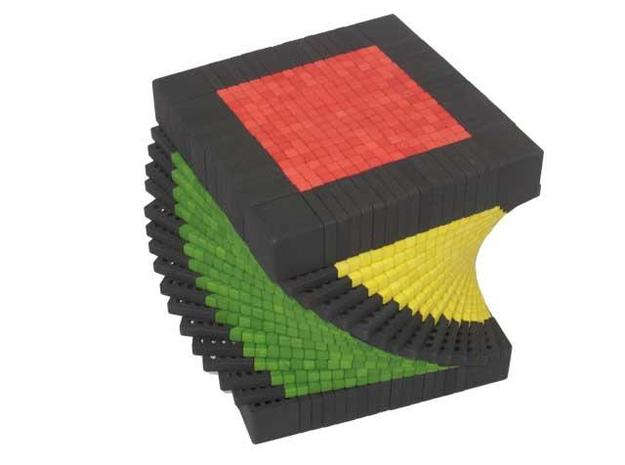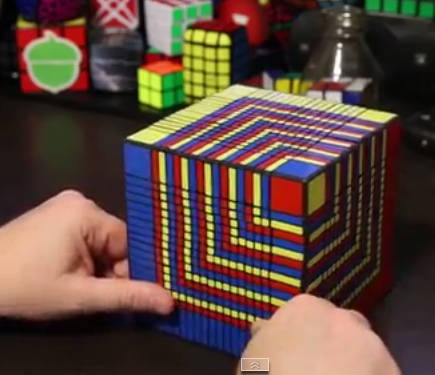| 17x17x17 Rubik Cube Solved In 7.5 Hours |
| Written by Harry Fairhead |
| Saturday, 03 January 2015 |
|
This is something of a puzzle, and I don't mean solving this huge Rubik's cube. Is this something to be proud of or is it just the tedious application of an algorithm better suited to a computer rather than a human? What you feel about the Rubik's cube problem does seem to depend on how much of a programmer you are - following a completely unscientific microsurvey. If you are a programmer then when presented with a puzzle you probably start to think of ways that you could solve all puzzles of the same type, i.e. you want to find not a solution to the specific puzzle but an algorithm for finding the solution to the whole class of similar puzzles. So it is with Rubik's cube - and there are many algorithms with different characteristics that will eventually solve the cube. Some are even capable of finding optimal solutions, but in general we settle for a set of operational methods that guarantee a solution in a reasonable number of moves. Of course, most of this work is focused on the 3x3x3 cube and we now know that such a cube can be solved in no more than 20 moves - and hence 20 is the so called "God's Number", see Rubik's cube - the order of God's Number So the 3x3x3 cube is boring, even though there are still competitions to see how fast it can be solved. There are also competitions to see how fast 4x4x4 and 5x5x5 cubes can be solved, but 17x17x17!? There are more than 66 followed by 1053 zeros different possible positions in a 17x17x17 puzzle, so finding any state that you might consider ordered is a problem in a huge search space.
But first you have the problem of building a 17x17x17 cube - not a mechanically easy challenge in itself. You can buy such a cube from Oskar van Deventer at Oskar Puzzles. His "Over The Top" is also the holder of the Guinness record for the largest physical Rubik's cube. So given a 17x17x17 puzzle what do you do? Solve it of course. This is what Kenneth Brandon, aka RedKB, did and he made a video of the entire seven and a half hours it took to solve. Fortunately he also made a timelapse version of the video so you can watch it in just over six minutes:
The descriptions of how the puzzle was solved make sense if you know some of the algorithms that apply to the smaller versions of the cube. There is also a certain satisfaction to be had from watching the final stages even if you are a believer in algorithms rather than hard work. Mind you, I doubt that most of us are even willing to watch the full video at seven and a half hours - but if you want to here it is:
At the end of the day, doesn't it leave you feeling glad that computers were invented to solve this sort of problem?
More InformationRelated ArticlesRubik's cube - the order of God's Number
To be informed about new articles on I Programmer, sign up for our weekly newsletter, subscribe to the RSS feed and follow us on Twitter, Facebook or Linkedin.
Comments
or email your comment to: comments@i-programmer.info
|
| Last Updated ( Sunday, 07 July 2024 ) |



